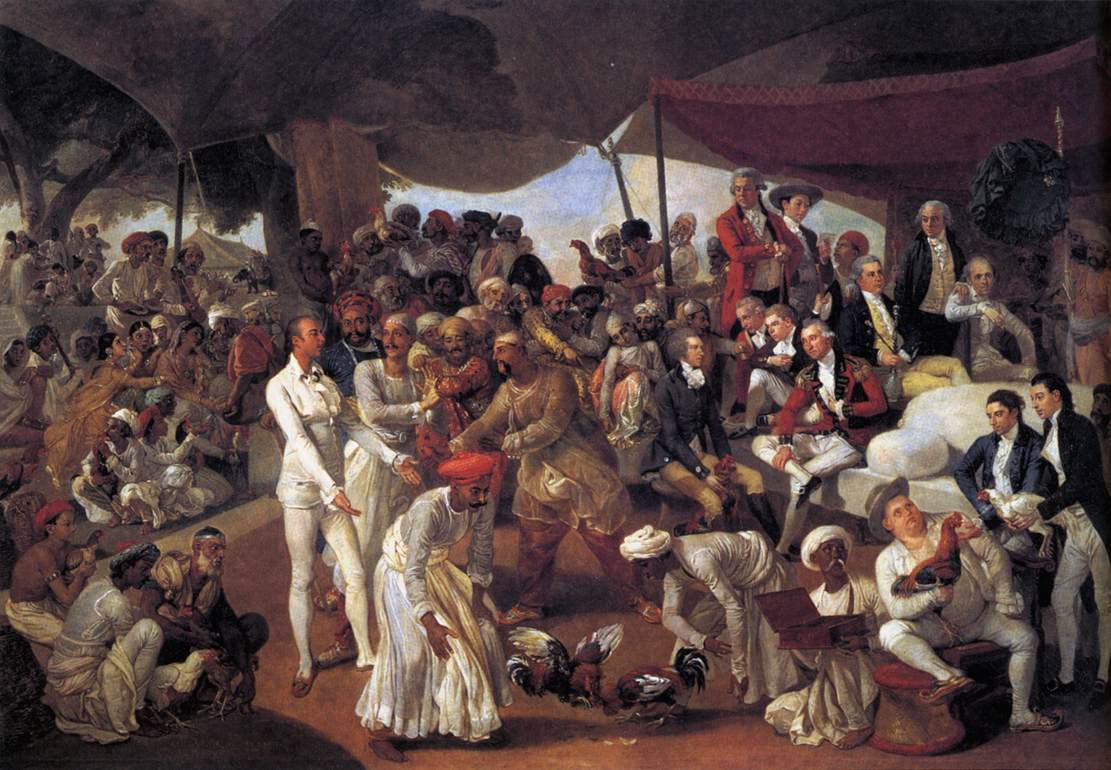Zoffany at the Royal Academy and the East India Company
Zoffany at the Royal Academy and the East India Company
April 5, 2012 Comments Off on Zoffany at the Royal Academy and the East India CompanyIf you can fight your way through the queues for the David Hockney show, I thoroughly recommend a visit to the exhibition Johan Zoffany RA Society Observed at the Royal Academy. Zoffany’s sometimes mischievous portraits of London society are bound to fascinate anyone with an interest in Georgian London. For me however, it is the paintings Zoffany made in India that are the most interesting, highlighting the complex relationship between Britain and India in the late eighteenth century.
The German born artist left London for India in 1783 with an eye on earning money from painting the rich and powerful. He soon met up with Warren Hastings, Governor-General of Bengal and employee of the East India Company. At this stage it wasn’t a case of the British ruling in India, Hastings had to use diplomacy and bargaining to extend the power of the Company. The military might of the Company was used too, often intervening on one side in local conflicts, in return for trading rights. Hastings used Zoffany’s portraits as tools to flatter leaders and their families. The portrait of Prince Jawan Bahkt, heir of the Mughal emperor shows him as a powerful stately figure. In reality the prince was in retreat from his military enemies, but Hastings knew that the emperor held the key to allowing the Company to charge taxes in that part of India. Another beautiful portrait depicts Hazan Raza Khan, chief minister to the Mughal emperor, but also a tax collector for the British.
The exhibition also depicts British families living in India, for instance the Impey Family which shows the family watching their young daughter dancing in Indian dress. The most impressive work though is “Colonel Mordaunt’s Cock Fight” which depicts many of the important members of the royal family of Awadh preparing their prize cockerel to fight against the cock owned by a group of East India Company men. The painting might be a metaphor for the negotiations and posturing between the parties to gain advantage in India, but as ever the relationship was complex, Colonel Mordaunt was a British soldier serving as bodyguard for Asaf ad Daulah, ruler of Awadh, though he was probably spying for the Company as well.
The exhibition challenges some of our assumptions about the relationship between Britain and India. The British were reliant upon Indian rulers to allow them access to the country, and Indian royal families had to be treated with respect. Not until the nineteenth century did the British see themselves as rulers of India, and Indians subjects of a British Empire.
Johan Zoffany RA Society Observed is on until June 10th. Ill be talking about the East India Company in my walk Maritime Blackwall – Spice Traders and Ship Builders on April 22nd – more details at http://footprintsoflondon.com/maritime-blackwall

